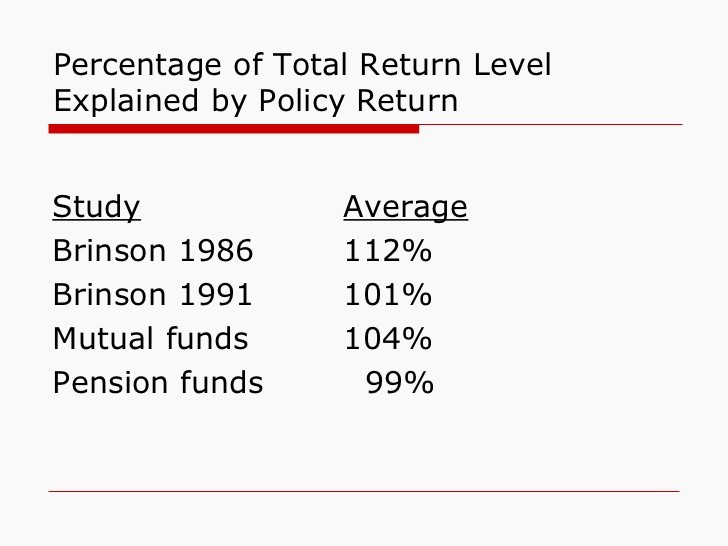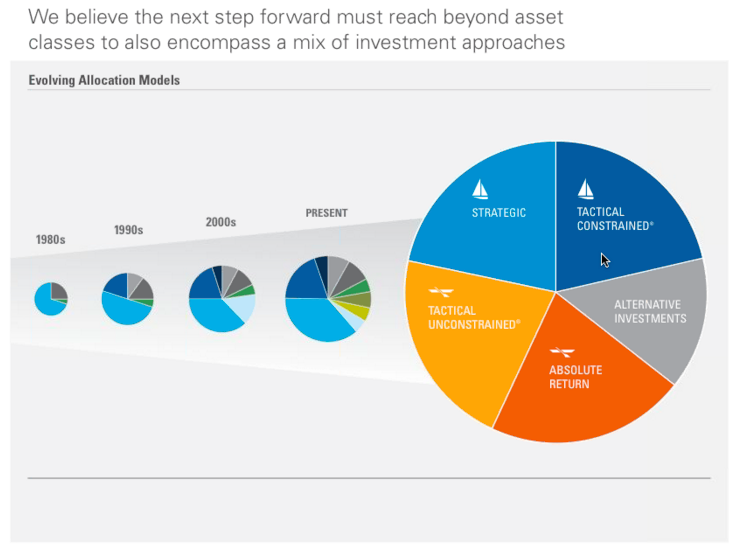Asset Allocation Explained
Post on: 17 Июнь, 2015 No Comment

The idea is simple, really: Don’t put all your eggs in one basket.
If you’ve managed to save some money, and you keep saving each year, good for you! Being in a place where you’re (presumably) free of bad debt (such as credit card debt) and can save each year is a very good place to be. But it’s not worry-free. If you have a stash of money, you need to invest it – otherwise you risk having it slowly lose its value because of inflation. But where to put your money? That’s where asset allocation becomes your best friend.
Your Investing Options
Suppose you have $10,000 to invest. Your goal is to avoid losing the money (duh), growing it so that it catches up with inflation, and hopefully growing it at a faster pace than inflation, so that you are able to comfortably retire someday.
While putting all your money in an FDIC-insured savings account or buying a Certificate of Deposit may seem to make sense, the reality is that the interest you’ll earn on these investments will be so low that your money will not keep up with inflation and will gradually lose value. So, while the least risky, this is not a very good strategy.
On the other hand, if you’re a risk-taker, you might be tempted to put all your money into the stock market, where it will give you the best return. Say you begin investing $10,000 today in an index fund, and expect to get the same average return that the stock market has returned since 1926 – 11% annually. With compounding, your money will double every six and a half years, to about $40,000 after 13 years, $160,000 after 26 years, and an amazing 2.5 million after 52 years. (Source: Kiplingers )
But as we all know, the stock market can crash, and since you never know WHEN exactly it will crash (it could be just as you’re getting ready to retire), putting all of your money there would simply be too risky for most people.
Similarly, bonds can crash too, especially when there are interest rate hikes. With bonds there’s also the risk of default – and while most of us still believe that United States treasuries are very safe, municipal and corporate bonds do run the risk of default.
If You’ll Need The Money Soon, Stay Away From Stocks
Since any asset group can crash during any given time, but rarely do they all crash at the same time, it makes a lot of sense to divide your precious nest egg between several baskets, diversifying your investments and allocating different portions into different investment vehicles.
You certainly want to have about 6 months’ worth of living expenses in cash – that’s your emergency fund. In addition, if you’re anticipating any major expenses over the next year, such as a wedding, a down payment on a house or purchasing a car, those funds should also be in cash – an FDIC insured savings account, like an online savings account. should work well.
Next, any money you’ll need over the next decade, including money you’ll need during the first few years of retirement, college savings for your kids or any other major expenses you anticipate, should be in CDs and bonds. This can include treasury bonds, municipal bonds (unless your state is in financial trouble) or high quality corporate bonds.
The rest of your money – anything you won’t need over the next decade – can go in the stock market where it will likely grow nicely and more than keep up with inflation. But as you near retirement, or as your kids near college age, remember the 10-year rule, and pull out of the stock market anything you will need over the next decade. Ideally you should re-balance your portfolio every year to make sure you are sticking with your basic asset allocation plan and not keeping too much – or too little – in stocks.
Even when you do reach retirement age, it’s important to keep a portion of your money in stocks – this will help ensure that you won’t run out of money. On average, people today live for a LONG time, so don’t be surprised if you’re still alive and kicking at 85 or 90. Retiring at age 65 means you should support yourself for at least 20 years, so – again – keep whatever you’ll need over the next decade in “safer” vehicles such as treasuries, but consider putting everything else in the stock market.
Investing Is Not Just About Cash, Bonds and Stocks
Remember that in addition to cash, bonds and stocks, there are other asset classes that you may want to diversify into. These include precious metals such as gold (or a gold fund such as GLD), real estate (or a REIT – a Real Estate Investment Trust), natural resources (such as oil), and foreign currency.
Diversify Your Bonds and Stocks, Too
We’ve already mentioned different types of bonds – treasuries, municipal bonds and corporate bonds. When it comes to stocks, once you determine how much you can put in stocks, you should further break down your equity investments into additional asset sub-classes. These include company size (large-cap, mid-cap or small-cap) and the mutual fund’s investment style (growth, value, or a blend). You should also hold part of your stock portfolio in foreign stock, and perhaps also part of your bond portfolio.
The idea is that different sectors do well – or not so well – at different times, so it’s a good idea to diversify and get exposure to as many asset sub-classes as possible. The larger your portfolio, the more it makes sense to diversify into many sub-classes.

But Don’t Let This Scare You Off!
I said it before, and I’ll say it again: Even though this may sound complicated, mutual fund investing is not rocket science.
If I do it, anyone can do it. Let’s assume you put the money you’ll need over the next year in a savings account, and the money you might need over the next decade into a mix of treasuries, an FDIC-insured CD ladder, and some high-quality corporate bonds. You are now left with $10,000 to invest in the stock market and in other asset classes. In this case, you could do something like this:
$5,000 (50%) – a large-cap index fund such as Vanguard Large Cap Index (VLACX)
$2,000 (20%) – a mid-cap fund such as T. Rowe Price Mid-Cap Growth (RPMGX)
$1,000 (10%) – a foreign equity fund such as Dodge & Cox International Stock (DODFX)
$1,000 (10%) – A gold ETF such as SPDR Gold Shares (GLD)
$1,000 (10%) – a REITs fund such as Vanguard REIT Index ETF (VNQ)
Of course, this is in no way a recommendation, as you should always do your own homework first (try morningstar.com and fool.com) and invest according to your own needs and risk tolerance.
Editor’s Note: I’ve begun tracking my assets through Personal Capital. I’m only using the free service so far and I no longer have to log into all the different accounts just to pull the numbers. And with a single screen showing all my assets, it’s much easier to figure out when I need to rebalance or where I stand on the path to financial independence. They developed this pretty nifty 401K Fee Analyzer that will show you whether you are paying too much in fees, as well as an Investment Checkup tool to help determine whether your asset allocation fits your risk profile. The platform literally takes a few minutes to sign up and it’s free to use by following this link here. For those trying to build wealth, Personal Capital is worth a look.














